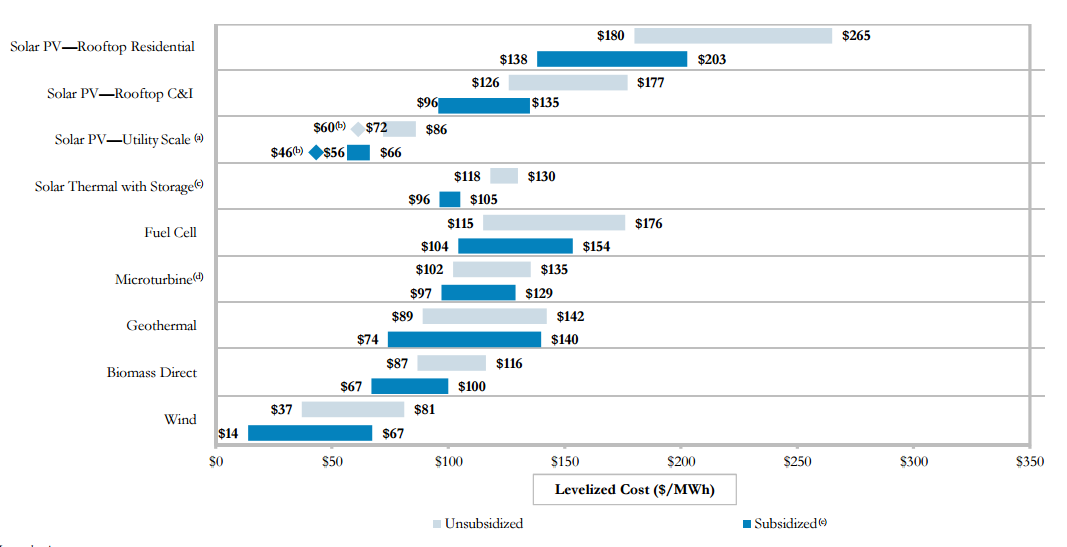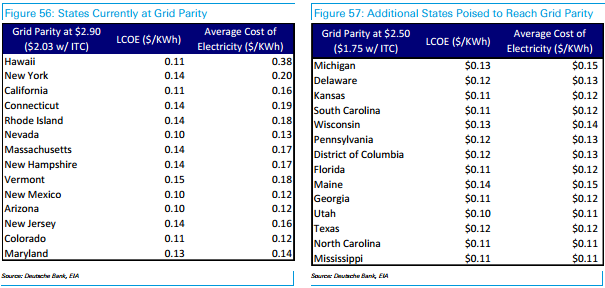The cost of solar power has been coming down dramatically in the past few years. You would have surely heard that. Within the solar sector, the cost of utility scale solar power have been falling even more significantly than the cost for distributed (mainly rooftop-based) solar power.
In the recent past, while a significant amount of discussions for US solar power have been on the residential and commercial rooftop solar growth, the real force for solar growth in the US in terms of quantum has been the utility-scale solar power plants.
This post discusses the cost of power generated from the US utility scale solar power plants.
What are utility scale solar power plants?
Utility scale solar refers to large-scale solar power plants, typically starting with 1 MW and going all the way to even 1000 MW. These are usually ground mounted solar power plants that export all the power generated to the grid.
Such MW solar power plants could be constructed as just solo power plants of relatively small sizes (1-5 MW) or as part of large solar farms (100+MW each).
While almost all these MW-scale, ground mounted solar power plants export the power generated to the grid, the ultimate buyer of the power could either be the utility (a government-owned electricity board), a third party private company, or in certain cases the buyer could be the owner of the power plant itself, in which case it is termed as captive solar power plant.
Both governments and commercial investors worldwide are finding utility scale solar power plants to be attractive.
Cost of utility scale solar power in the US
With cost of solar power fast decreasing in the US, many investors are keen to invest in large, utility scale solar power plants (usually 1 MW and higher). These are large solar farms usually connected to the grid.
Usually, the cost of solar power is denoted as LCOE, which stands for levelized cost of electricity. This metric, while it sounds complex, is a fairly simple one:
LCOE = total costs during the entire project cycle/total units of electricity generated during the entire project lifecycle.
Utility scale solar power plants and have a lifespan of 25 years. Thus, while calculating LCOE, we need to estimate all the costs (capital costs, financing costs, O&M costs, costs for parts replacement etc.) and estimate the total number of units of electricity that will be produced during the 25 years of the project, and divide the former by the latter.
The LCOE gives the true cost for a solar power system which has high upfront costs but provides benefits over 25 years.
Based on an analysis of estimates from multiple sources, Solar Mango estimates that the cost of solar power for utility scale projects in the US are as follows:
Cost of Utility Scale Solar Power in the US
|
Sources & References for Cost of Utility Scale Solar Power – USA
Related Articles
- What is the Cost of Rooftop Solar Power (C/Kwh) in the US?
- What is the Installation Cost of Rooftop Solar Power Plant ($/kW) in the US?
- How Much Do Batteries Cost for Rooftop Solar Power Plants?
- How Much Do Solar Mountings Cost?
- Is Solar Power Cost Affordable without Subsidies?
- What Will Be the Cost of Solar by 2017?
- Can I have Rooftop Solar Installed without Any Upfront Cost?



